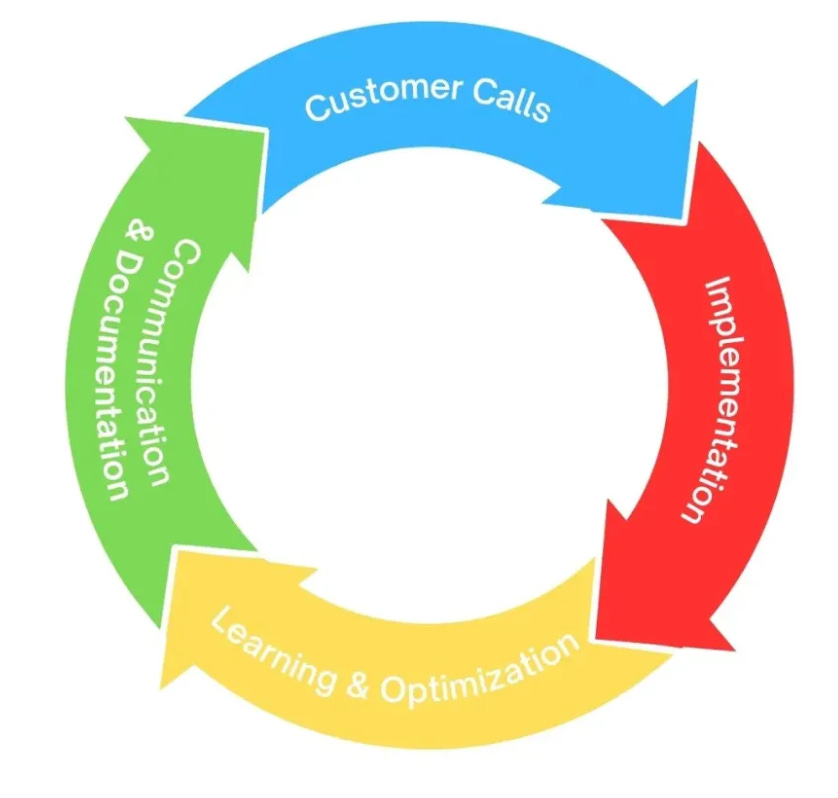Behind the Scenes: What Makes a Smooth SaaS Onboarding?
Learn to be the bridge between product, people, and process
Hello there! Welcome to the behind-the-scenes of what it takes to onboard a SaaS client. I’m sharing my secret sauce for seamless Software as a Service (SaaS) implementations, what no one tells you about onboarding, and the humans behind the handoff - what truly makes SaaS work!
If this interests your appeal, this blog is all you need to become an expert in your SaaS onboarding career!
I’m Priya Dikshit, an Onboarding Specialist at Fyle for over two years. If you enjoy this blog, you might also want to check out my previous post: “A Day in the Life of an Implementation Executive at Fyle.”
Now, let’s jump into the main hustle!
The Art of Onboarding: Setting Customers Up for Success

The most powerful tech conversations begin with listening, not explaining
A smooth SaaS onboarding doesn’t start with software or tech information - it starts with the customer’s use case, their success metrics, and understanding what they want. I make it a point to understand their priorities, set up realistic timelines, and bring clarity to the scope, which helps both the customer and me stay on the same page.
Trust me - you don’t need to drop tool names or show off integrations. Setting the right use case and expectations from day one goes a long way in building a healthy, long-term bond with customers.
Checklist & Flexibility: The Unsung Heroes

Checklist - Easy, Simple, and Yet Used by Only a Few!
Yes, I was one of them until one of my teammates introduced me to this underrated, yet incredibly efficient tool called the checklist. Of course, checklists help you stay organised and free from brain clutter, but that’s just the tip of the iceberg!
Internal checklists and SOPs not only help in understanding and differentiating customer needs, but they also train you to build a powerful skill: flexibility.
A Process that Flexes (But Doesn’t Break)
A checklist might seem like a rigid tool, but it actually empowers you to be flexible - something that’s essential when building a strong onboarding foundation.
No two customers are the same, and no one checklist can cover every use case. I’ve worked with smaller clients who required more complex setups and larger accounts that demanded deeper coordination. That’s why having a system in place even a simple one can make a huge difference in keeping your onboarding process strong yet adaptable.
Tech is the Only Half the Story
Tech can solve problems, but knowledge prevents chaos
To be a problem solver, I first need to understand the problem myself before I can help someone else. Unfortunately, there’s no secret ingredient to problem-solving when it comes to helping customers.
As an onboarding executive, I act as the bridge between the product and the customer - and that means I need to have a strong grasp of the product from the ground up.

Onboarding = The Underrated Brain of SaaS
The onboarding team is often an underrated knowledge base in human form. From Product to Support, and Tech to Customer-facing - onboarding touches it all.
So, along with the technical know-how, I as an onboarding executive must bring in product expertise, customer empathy, and the confidence to handle client interactions effectively.
Speed + Empathy Wins
In my journey from an Implementation Executive to an Onboarding Specialist, I’ve learned that there are two things a customer always remembers and appreciates: how fast you responded and how understood they felt.
I’ve often received customer feedback highlighting professionalism and product knowledge - and both of these ultimately come down to how well you respond to ease the customer’s anxiety, and how well you make them feel valued.
Every account onboarding comes with its own struggles and blockers. But how you manage to solve them without losing your cool - that’s what truly makes a difference and stays with the customer long after go-live.
Life at the Crossroads of Tech, Process, and People
You Wear Many Hats - Sometimes All at Once
Project Manager: We build timelines, take each account as a project, align stakeholders and ensure go-live doesn’t get derailed.
Executor: Along with project managing, we individually form a one person team executing the plan to deliver the results.
Trainer: We take complex product features and break them down into intuitive steps. You help users go from "What is this?" to "I can’t imagine working without this.”
Troubleshooter: Field mapping errors? Integration hiccups? Export mismatches? We are the first line of defense - calmly untangling the mess and looping in the right teams.
Growth in the Most Unexpected Ways
Being in the Onboarding team as a beginner has helped me grow both professionally and personally. What started as a role about helping customers implement software, slowly became a role about:
Solving Business Problems
Understanding, growing and learning from different use cases and complexities
Improving internal process
Becoming the voice of the customer in product discussions
And sometimes, even mentoring new teammates who are stepping into onboarding for the first time.
So, if you found the above interesting, appealing, and challenging enough to grow and explore this role, you might just be the right fit!
At the end of the day, onboarding is where the promise of the product becomes real and being a part of that transformation is as rewarding as it is challenging.
I hope this gave you a little more insight into our onboarding process and a little more appreciation for what our roles truly involve.




Amazing read, Priya!
Loved this! So cool to see our behind-the-scenes story come to life like this